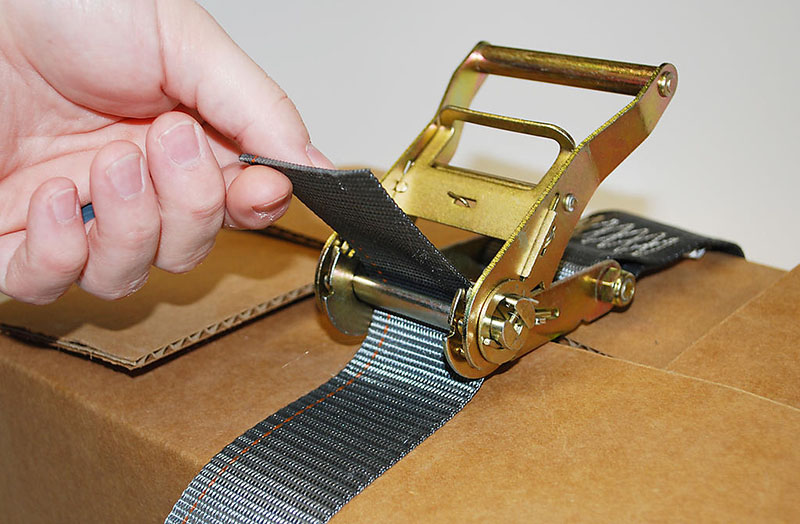Ratchet straps may be quite handy, particularly for persons who need to transport heavy-duty merchandise from one location to another in their trucks, on van roofs, and so on. There are several alternatives on the market, each with different characteristics that may assist you in tying down and rapidly securing your luggage. To get the most out of these straps, you must select the appropriate ones for your purposes. Finding the proper one among so many comparable items is difficult, so Fletbed Equipment Inc put up a shopping guide to assist you to invest in the best ratchet straps.
What makes ratchet straps superior to normal ropes?
Most people choose to tie down goods to their truck beds, car roof, trailers, and other vehicles using standard ropes, but they are inefficient and have been known to cause accidents since the knots you tied can come free at any time. It’s a better idea to utilize ratchet straps to move your stuff, and we’ll go through why they’re better than plain ropes below.
- Ratchet straps secure items with far more strength than ropes, providing greater safety during transit.
- Ratchet straps do not require knots since they are supplied with loops and S-hooks. However, if you wish to expand ropes, you must connect them together using knots.
- Ratchet straps have a high break strength and can withstand mechanical wear and tear, whereas ropes can shatter quickly when overstretched.
- Ratchet straps may be used with any vehicle, including vans, trailers, and trucks, while ropes cannot.
Considerations while selecting ratchet straps
Length
Tie-down ratchet straps come in a variety of lengths, often ranging from 15 to 18 inches. The longer the straps, the easier it will be to secure huge items on your vehicle. A 15-inch strap may be used to secure bicycles, bikes, ATVs, and other vehicles, however, it may not be appropriate for fastening two stacked bicycles. In this scenario, 18-inch straps are ideal since they are long enough to assist secure bicycle stacks.
Mechanisms of escalation
When selecting ratchet straps, the most critical factor to consider is the ratcheting mechanism. The ratcheting mechanism should have rubberized handles and ergonomic construction to ensure a solid and controlled grasp. Check for a spring-loaded construction, which will keep the handles from accidentally opening. Aside from that, make sure the ratcheting system has smooth buckles so you can loosen or tighten the straps fast and easily. There must also be webbing that can adapt without becoming stuck so that you can roll the strap easily—some ratchet straps have a quick-release lever that, when pressed, quickly releases the webbing.
Load-carrying capacity and break strength
Break strength is the maximum tensile force a ratchet strap can withstand before breaking, whereas load-carrying capacity is the maximum cargo weight it can support. A good ratchet strap will have a high load-carrying capacity and break strength, allowing you to tie down your cargo quickly and safely. Break strength ranges from 1,500 to 2,300 lbs, while load capacity ranges from 500 to 833 lbs. If you need to secure heavy cargo, choose a ratchet strap with a high load-carrying capacity and break strength.
S-hooks
Ratchet straps have S-hooks with a completely bent construction to prevent the webbing from slipping off accidentally. Make sure these hooks are strong enough to withstand the straps’ high tensile strength without causing structural damage, and if you want to tie down your cargo with a lower anchor point, choose ratchet straps with a carabiner-styled S-hook—you won’t have to worry about the straps loosening or coming off the anchor point.
Loops that are soft
Because S-hooks cannot be used on all vehicle constructions or cargo sections, soft loops can be useful. Straps have a half twist to ensure a smooth surface once the knot is formed, and fastening it prevents the loop from being lost.
Material
The webbing in most ratchet straps is constructed of strong polyester since it is light and can handle a high load. Some ratchet straps include a weather-resistant and/or UV-resistant coating that allows you to use them in a variety of climates and weather situations. S-hooks and ratcheting mechanisms are often built of stainless steel frames for increased durability, and their surfaces are coated with rubber to keep your hand safe and prevent car surface damage from continual rubbing. The buckles and springs in ratcheting devices are composed of metal to resist the tensile strength of the straps.
Bag for transport
All ratchet strap packs have an extra carry bag, which is either a pouch or a zipped bag. Whatever type you have, this bag will help you arrange everything and keep it neatly in your car.
What is the price of a pack of ratchet straps?
A pack of ratchet straps costs between $24.99 and $34.95, depending on a variety of criteria. A pack of ratchet straps with a high break strength and load capacity will cost more than one with lesser values, and the total package will cost more if your ratcheting mechanisms or S-hooks have distinctive constructions.
How to Effectively Use Ratchet Straps
If you don’t know how to utilize a ratchet strap’s ratcheting mechanism, follow these guidelines:
- Using the S-hook, secure the ratcheting mechanism to the anchor point.
- Insert the open end of the ratchet tie-down strap through its handle.
- Pull this outside by looping it through the tiny shaft. Take off enough webbing to conveniently alter the tensile strength.
- Tie the load to the opposite end (hook) of the tie-down strap.
- After you’ve fastened both straps, open and close the ratcheting mechanism.
- It will continue to roll in the webbing, increasing the strain.
- Close the ratcheting mechanism handle after you’re pleased with the tightness.





More Stories
Jessica Stein: Review A Financial Visionary and Top Broker at Maplewells.ca
Decoding the Impact of AI on Digital Marketing: A Look at WordPress Multisite
Evading SEO Pitfalls: Amplifying your Business through an Experienced SEO Agency